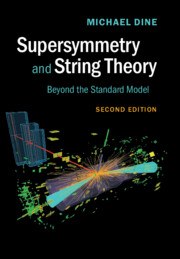Book contents
- Frontmatter
- Dedication
- Contents
- Preface to the First Edition
- Preface to the Second Edition
- A note on the choice of metric
- Text website
- Part 1 Effective field theory: the StandardModel, supersymmetry, unification
- Part 2 Supersymmetry
- Part 3 String theory
- 20 Introduction
- 21 The bosonic string
- 22 The superstring
- 23 The heterotic string
- 24 Effective actions in ten dimensions
- 25 Compactification of string theory I. Tori and orbifolds
- 26 Compactification of string theory II. Calabi–Yau compactifications
- 27 Dynamics of string theory at weak coupling
- 28 Beyond weak coupling: non-perturbative string theory
- 29 Large and warped extra dimensions
- 30 The landscape: a challenge to the naturalness principle
- 31 Coda: Where are we heading?
- Part 4 Appendices
- References
- Index
20 - Introduction
from Part 3 - String theory
- Frontmatter
- Dedication
- Contents
- Preface to the First Edition
- Preface to the Second Edition
- A note on the choice of metric
- Text website
- Part 1 Effective field theory: the StandardModel, supersymmetry, unification
- Part 2 Supersymmetry
- Part 3 String theory
- 20 Introduction
- 21 The bosonic string
- 22 The superstring
- 23 The heterotic string
- 24 Effective actions in ten dimensions
- 25 Compactification of string theory I. Tori and orbifolds
- 26 Compactification of string theory II. Calabi–Yau compactifications
- 27 Dynamics of string theory at weak coupling
- 28 Beyond weak coupling: non-perturbative string theory
- 29 Large and warped extra dimensions
- 30 The landscape: a challenge to the naturalness principle
- 31 Coda: Where are we heading?
- Part 4 Appendices
- References
- Index
Summary
String theory was stumbled on, more or less, by accident. In the late 1960s, string theories were first proposed as theories of the strong interactions. It was quickly realized, however, that, while hadronic physics has a number of string-like features, string theories were not suitable for a detailed description. In their simplest form, string theories have massless spin-2 particles and more than four dimensions of space–time, hardly features of the strong interactions. But a small group of theorists appreciated that the presence of a spin-2 particle implied that these theories were generally covariant and explored them through the 1970s and early 1980s, as possible theories of quantum gravity. Like field theories, the number of possible string theories seemed to be infinite, while, unlike field theories, there was reason to believe that these theories did not suffer from ultraviolet divergences. In the 1980s, however, studies of anomalies in higher dimensions suggested that all string theories with chiral fermions and gauge interactions suffered from quantum anomalies. But in 1984 it was shown that the anomalies cancel for two choices of gauge group. It was quickly recognized that the non-anomalous string theories do come close to unifying gravity and the Standard Model of particle physics. Many questions remained. Beginning in 1995, great progress was made in understanding the deeper structure of these theories. All the known string theories were understood to be different limits of some larger structure. As string theories still provide the only framework in which one can do systematic computations of quantum gravity effects, many workers use the term “string theory” to refer to some underlying structure which unifies quantum mechanics, gravity and gauge interactions.
String theory has provided us with many insights into what a fundamental theory of gravity and gauge interactions might look like, but there is still much we do not understand. We cannot really begin a course of action by enunciating some great principle and seeing what follows. We might, for example, have imagined that the underlying theory would be a string field theory, whose basic objects would create and annihilate strings. Some set of organizing principles would determine the action for this system, and the rest would be a problem of working out the consequences.
- Type
- Chapter
- Information
- Supersymmetry and String TheoryBeyond the Standard Model, pp. 289 - 294Publisher: Cambridge University PressPrint publication year: 2016



